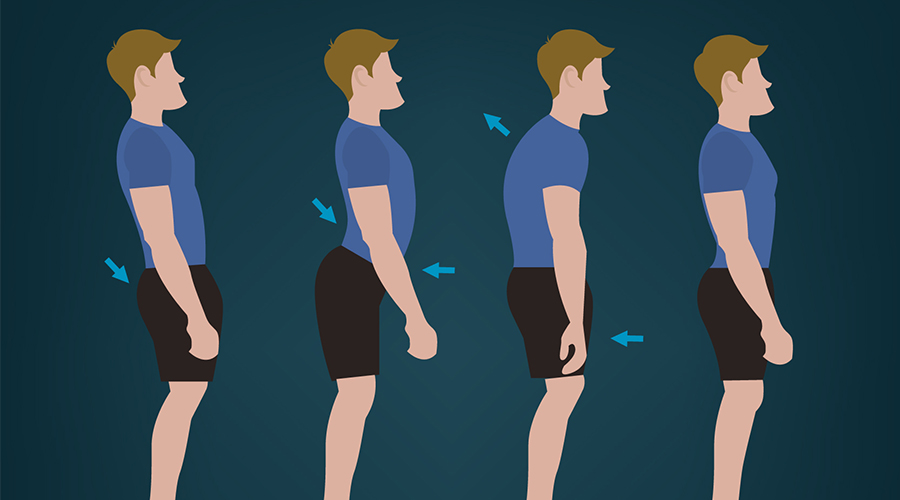It is important to determine where correction is needed for the correction of poor posture, such as when sitting on a driving seat or on a chair. Next, patients should work on changing daily habits to correct those areas. This effort will improve back support and help reduce back pain over time. It will take some effort and persistence, and will seem a bit unnatural at first. This is typical for feeling uncomfortable, and even takes a little longer, but over time the new posture will feel natural and more comfortable. If you want to achieve good posture and ergonomics in the workplace and other situations then you have to follow the guidelines given below.
Seating Posture For Office Chairs
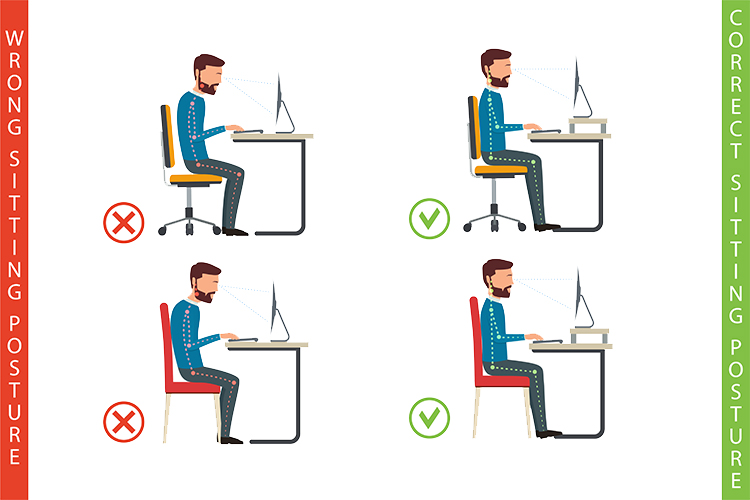
- Make sure the back is aligned along the office chair. Especially avoid tiredness or tingling when you are tired of sitting in an office chair for a long time.
- For prolonged sitting, such as in an office chair, make sure the chair is ergonomically designed to properly support the back and is a custom fit.
- When seated in an office chair at a desk, the arms at the elbow should be flexed at an angle of 75 to 90 degrees. If it does not, the office chair should be adjusted accordingly.
- Knees should be slightly higher when sitting in an office chair.
- Keep both feet flat on the floor. If there is a problem of feet reaching the floor comfortably, an office chair can be used along with a footrest.
- Sit on the office chair with shoulders straight.
- Do not sit for too long in one place in office chairs, which have good back support. Get up and spin as needed.
Standing Posture
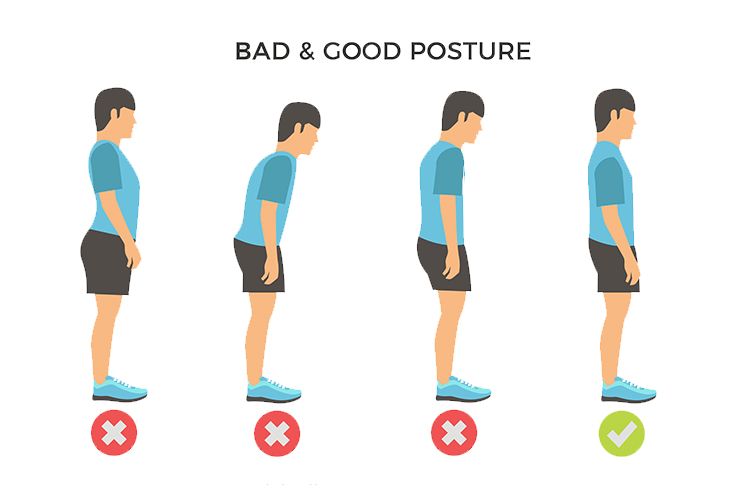
- Mostly stand with weight on the balls of the feet rather than weight on the heels.
- Keep feet slightly apart about shoulder-width.
- Let the hands hang down from the sides of the body.
- Avoid locking knees.
- Move the chin in slightly to maintain head level.
- Make sure the head is square above the spine, not forward.
- Stand straight and tall, shoulders should be up.
- If standing for a long time, rock the weight from one foot to the other, or from the heel to the toes.
- Stand against a wall with the shoulder and bottom touching. In this case, the back of the head should also touch the wall - if it does not, the head is moved too far (anterior head cart).
Walking Posture
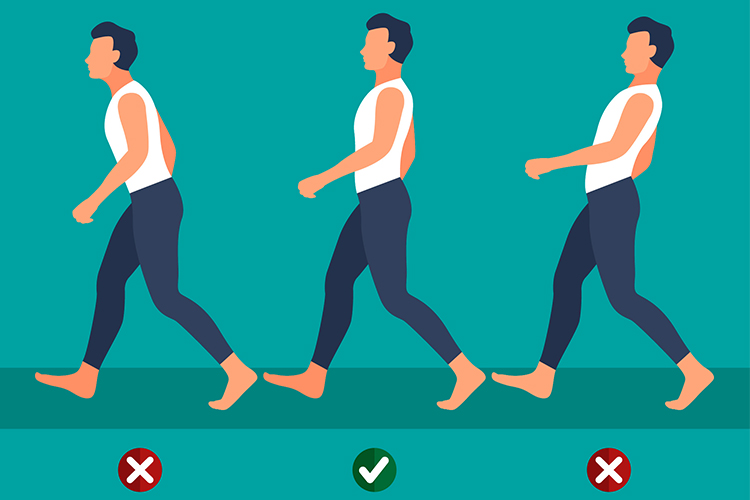
- Keep head and eyes straight ahead.
- Avoid moving head.
- Keep the shoulders properly aligned with the rest of the body.
Driving Posture
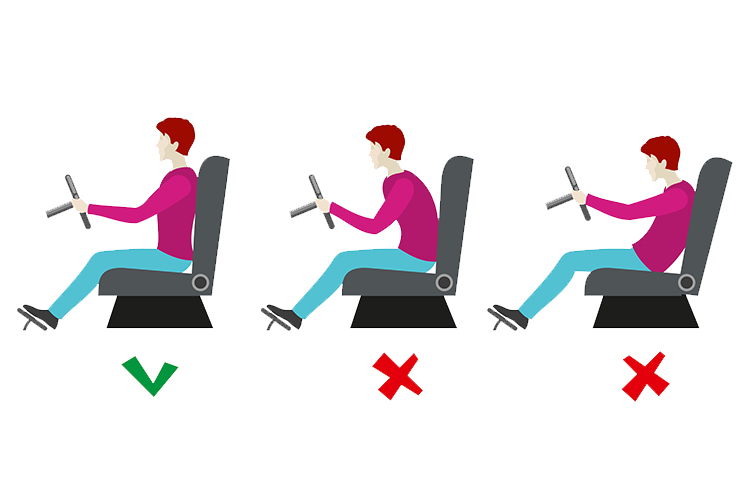
- Sit firmly behind the seat for proper back support.
- To avoid leaning forward or reaching, the seat should be properly spaced from the paddle and steering wheel.
- The hairline should be supported to keep the headrest straight. If possible, tilt the headrest forward to ensure that the head-to-headrest distance is no more than four inches.
Posture and Ergonomics during Weight Lifting and Carrying
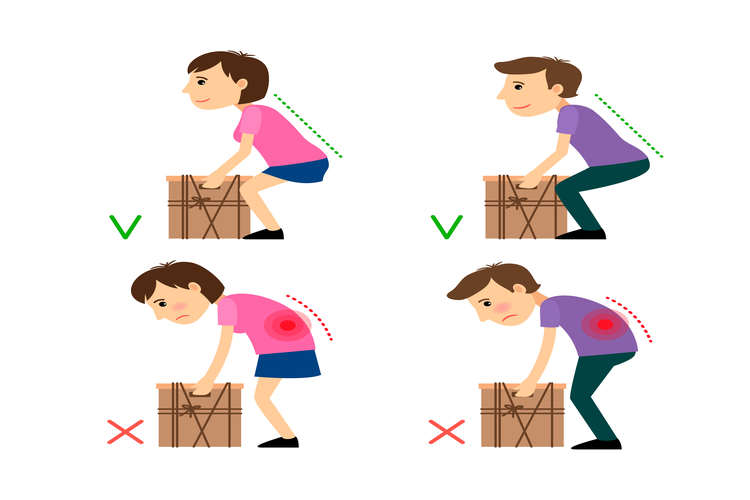
- Always bend at the knees, not from the waist.
- Use big legs and abdominal muscles to lift, not lower back.
- If necessary, get a support belt to help maintain good posture while lifting.
- When moving a heavy or large object, keep it near the chest.
- If carrying something with one hand, switch arms often.
- When carrying a backpack or purse, keep it as light as possible, and as much as possible, balance the weight on both sides, or move from one side to the other.
- When carrying a backpack, avoid leaning forward or round the shoulders. If the weight seems too much, consider using a rolling backpack with wheels.
It is important to note that an overall cause of poor posture is strained muscles, which will pull the body out of alignment. There are several specific exercises that will help stretch and relax the major back muscles. Some people find that meditation or other types of mental relaxation are helpful in relaxing the back muscles. And many consider massage therapy, yoga, tai chi or other regular exercise routines, or treatments such as chiropractic or osteopathic manipulation, which are helpful with both muscle relaxation and posture awareness and improvement.
